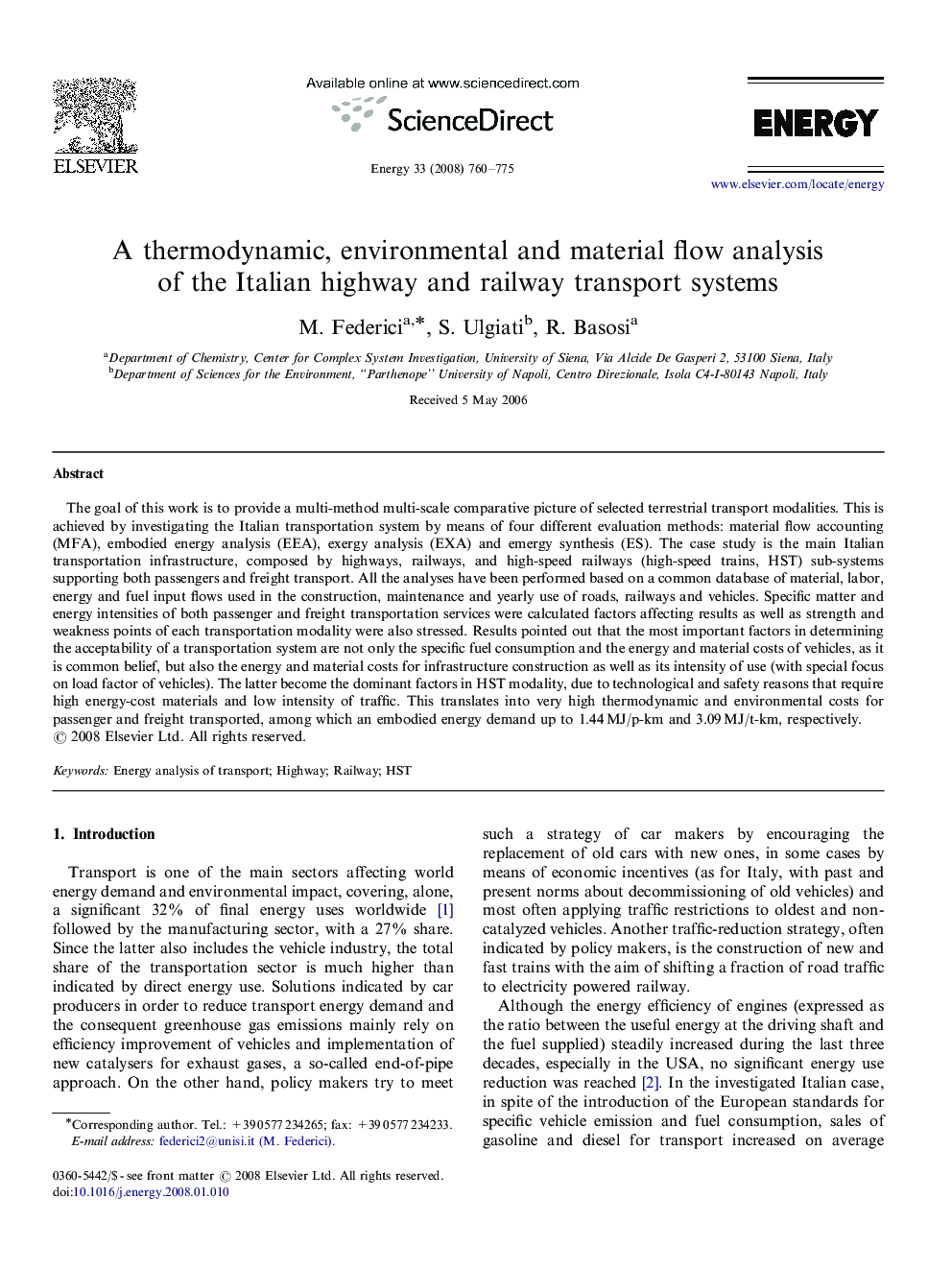| Article ID | Journal | Published Year | Pages | File Type |
|---|---|---|---|---|
| 1735599 | Energy | 2008 | 16 Pages |
The goal of this work is to provide a multi-method multi-scale comparative picture of selected terrestrial transport modalities. This is achieved by investigating the Italian transportation system by means of four different evaluation methods: material flow accounting (MFA), embodied energy analysis (EEA), exergy analysis (EXA) and emergy synthesis (ES). The case study is the main Italian transportation infrastructure, composed by highways, railways, and high-speed railways (high-speed trains, HST) sub-systems supporting both passengers and freight transport. All the analyses have been performed based on a common database of material, labor, energy and fuel input flows used in the construction, maintenance and yearly use of roads, railways and vehicles. Specific matter and energy intensities of both passenger and freight transportation services were calculated factors affecting results as well as strength and weakness points of each transportation modality were also stressed. Results pointed out that the most important factors in determining the acceptability of a transportation system are not only the specific fuel consumption and the energy and material costs of vehicles, as it is common belief, but also the energy and material costs for infrastructure construction as well as its intensity of use (with special focus on load factor of vehicles). The latter become the dominant factors in HST modality, due to technological and safety reasons that require high energy-cost materials and low intensity of traffic. This translates into very high thermodynamic and environmental costs for passenger and freight transported, among which an embodied energy demand up to 1.44 MJ/p-km and 3.09 MJ/t-km, respectively.
